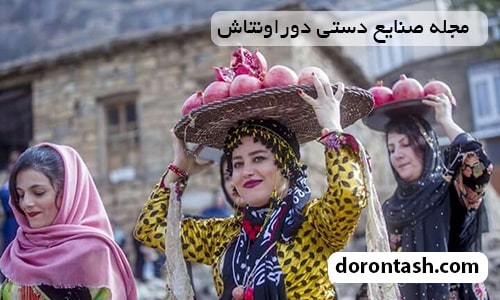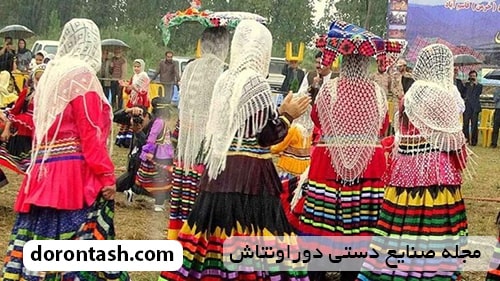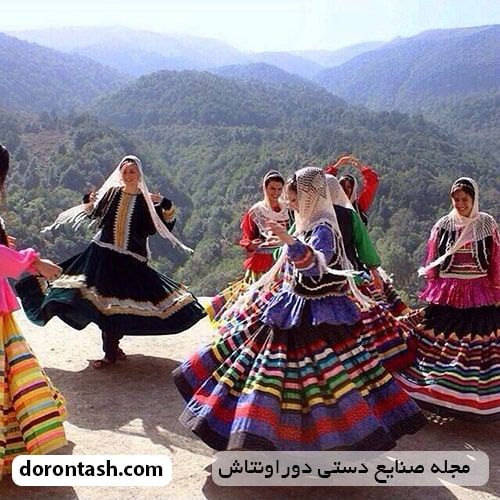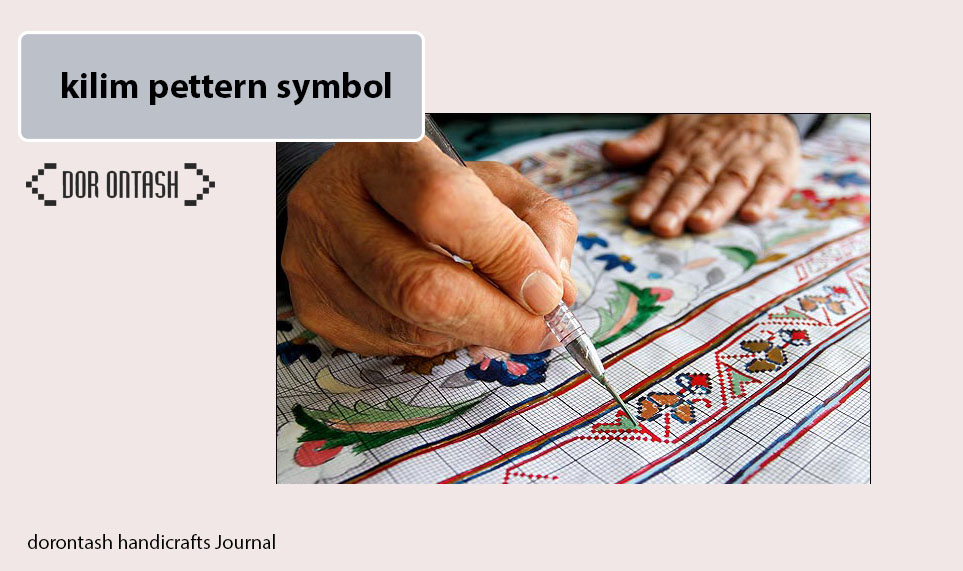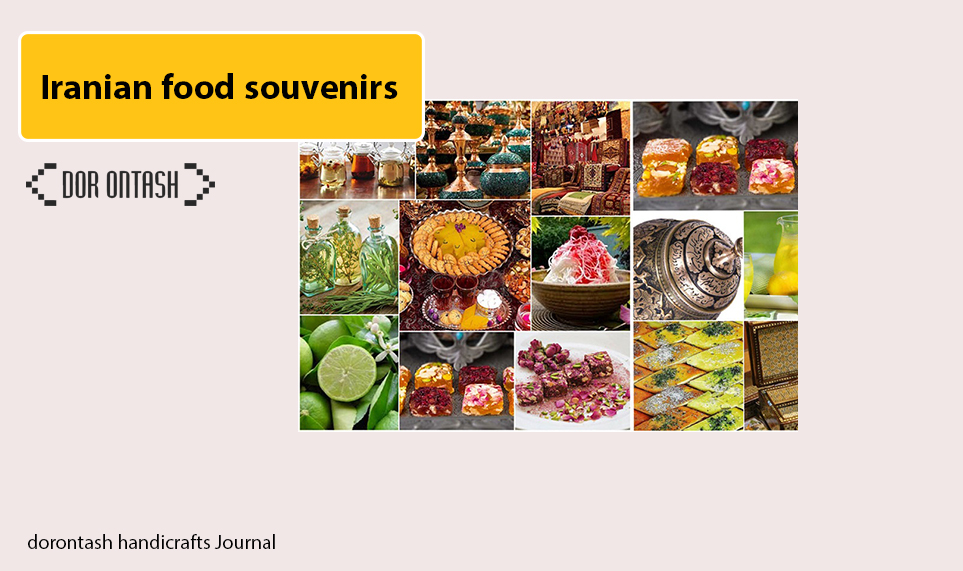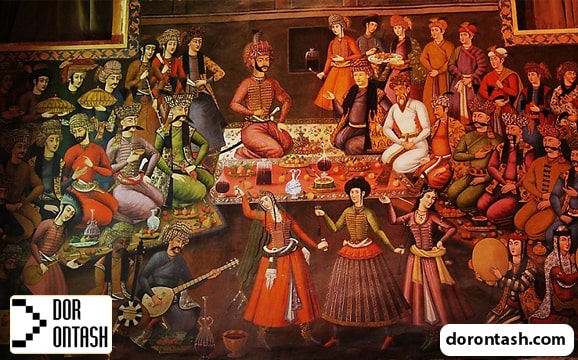 It is interesting to know that Iran is full of cultural and religious festivals that are held annually or seasonally. One of the ways to know the culture of Iranians in ancient times is to get to know the festivals of ancient Iran that were held at that time.
It is interesting to know that Iran is full of cultural and religious festivals that are held annually or seasonally. One of the ways to know the culture of Iranians in ancient times is to get to know the festivals of ancient Iran that were held at that time.
Although in some cases, the way and even the time of holding these celebrations have undergone changes over time. But studying or participating in one of these festivals will surely introduce you to the nature of this land. In this article, we have discussed some of the ancient festivals of Iran .
The history of ancient Iranian celebrations
Iranian ceremonies and celebrations are very attractive and magnificent and each of them has a story and a history. Iran has various festivals and ceremonies, including Nowruz, Yalda and Sedeh, which are among the most important ancient festivals. In ancient times, each day of the month had a special name, and one day of the month was named after the moon itself, and if this happened, they would celebrate that day.
All kinds of festivals in Iran, such as Farvardgan festival, Ardibeheshtegan festival, Khordadgan festival, Tirgan festival, etc., are all related to that time. Every celebration is essentially a sacred occasion. Celebrations and ceremonies were held based on Zoroastrian customs. Rituals such as sharing food and drinks, friendly meeting are part of the rituals of these ceremonies that have been left over from the past. In fact, these festivals and ceremonies are derived from Zoroastrian religion, the ancient religion of Iranians.
Festivals of Ancient Iran
The word celebration is derived from Yasna or Yasna, which in Pahlavi means worship, praise, prayer and joy. Nowruz is one of the seven important festivals of ancient Iranians. With the advent of Islam, the first six festivals that existed in the Sassanid empires were removed, and out of the seven essential festivals, only Spring Nowruz was celebrated.
The 19th day of the ancient Iranian months in the Avestan calendar is called Farvardin. This celebration was the day of commemoration of the dead for the people of ancient Iran, and they celebrated Nowruz by going to the graves of their departed ones. The people of ancient Iran believed that the spirits of their dead could share this happiness with them. In ancient times, people believed that the spirits of their ancestors should share with them in Nowruz and the happiness of this day, so people went to the graves of their loved ones and celebrated Nowruz with them. Even today, many people perform this popular ritual and go to the graves of their ancestors on the last Thursday of the year or on the eve of the new year and celebrate the beginning of the new year with their loved ones.
Etiquettes of celebrating Furugan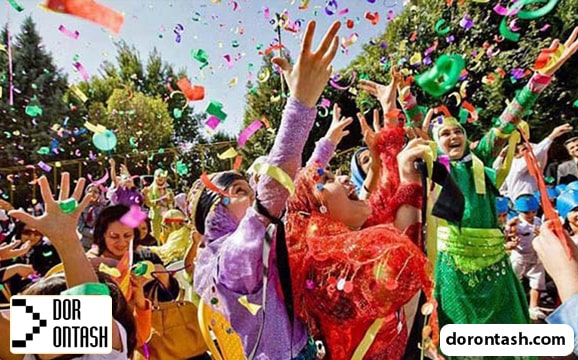
One of the customs of Furoergan festival, one of the traditional festivals of Iran, is to set fire and light incense on the graves of the dead. On this day, people wash the tombs of the deceased with water and rose water and put flowers and plants on their graves. Currently, many people go to the cemeteries and graves of their deceased on the eve of the new year or after the year has passed and thus celebrate the beginning of the new year with their deceased loved ones.
In April, there were other celebrations, one of the most famous of which was the Soroush Rooz celebration on April 17. This celebration was held in honor of “Soroush Izad”, who was the guardian of awakening.
Festivals of ancient Iran, Ardibeheshtegan festival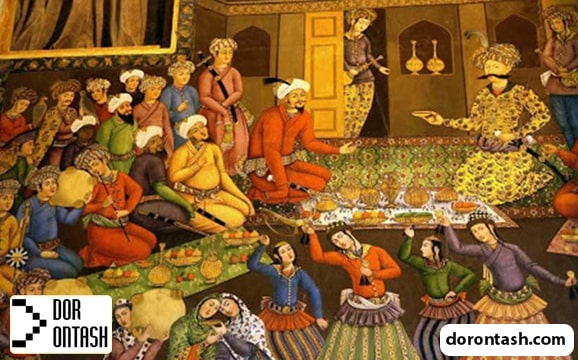
It is interesting to know that the third day of every month in the Avestan calendar is named Ardibehesht day. In some ancient calendars, the second day of Ardibehesht is given as Ardibeheshtgan. On the second day of Ardibehesht, people went to nature to collect flowers and plants, and the next day they celebrated in the name of Ardibeheshtgan to celebrate honesty.
In ancient Iran, people believed that the second day of May belongs to an angel who represents honesty and purity. In this celebration, people reminded themselves that they should maintain such characteristics in their lives. Among the rituals of this celebration, we can mention wearing white clothes, which is a symbol of purity and cleanliness. Due to the simultaneous celebration of Ardibeheshtegan with the blooming season of flowers and green gardens, this ceremony was held with many flowers. In this celebration, ancient Iranians wore white clothes, lit a fire and celebrated with dancing and stomping.
Festivals of ancient Iran Khordadgan festival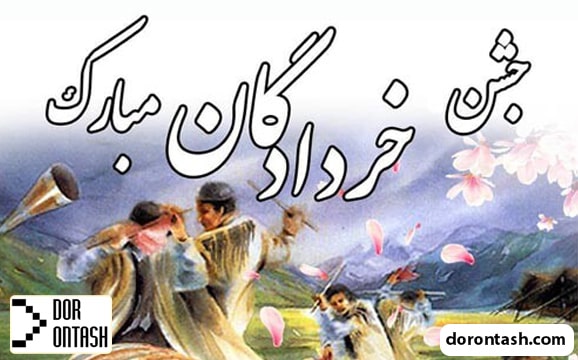
Khordadgan festival, another ancient festival of Iran, is held on the sixth day of the month of Khordad. One of the most important traditions of this day is going to the riverside and the seashore with friends and family, offering religious prayers in praise of Ahura Mazda and spending a happy day.
Khredadegan festival is held to honor water. Because in the Zoroastrian religion, water is considered to be the grower of all beings and the cause of birth and breeding. In the book “Faziyat Namah” written by the great Zoroastrian priest “Dator Darab Palan”, some of the activities of this day are mentioned, some of the activities of this day include: washing The body expresses the digging of wells and renewal of water channels.
The rituals of the June festival
The customs of Khordadegan celebration, which is one of the ancient Iranian celebrations, includes people going to the source of rivers or seas. On this day, the ancient Iranians used to wash their bodies in running water and by reciting prayers and rejoicing with their families. This day was also the right time to build and rebuild kariz. Planting seeds such as sesame was also popular in this celebration. In ancient Persian texts, the lily flower is mentioned as a sign of the celebration of children.
Festivals of ancient Iran Tirgan festival
Tirgan festival is an ancient summer festival that is held every year on the 13th of July. This festival is celebrated with fun activities such as splashing water, dancing, singing and wishing for abundant rain. Also, special foods are served on this day. This festival is still held in different regions of Iran such as Mazandaran, Kerman and Yazd provinces as well as Farahan city which is the big center of Tirgan festival.
 The customs of ancient Iranians on the 13th of Tir
The customs of ancient Iranians on the 13th of Tir
Among the most prominent rituals of the Tirgan festival, we can mention water sprinkling, divination in a jar, and Tir and Wind bracelets. Spraying water on each other was done by the rivers and it was to relieve the heat of July. To perform the fortune-telling ceremony, a green jar was filled with water, and after making intentions, each person present would put a device like a ring in the jar and then take the jar to the foot of a tree. At this time, the young girl would take out the objects inside the jar with the elders reciting poetry. The simultaneousness of each poem with the removal of the items inside the jar was considered an interpretation of the owner’s intention. The arrow and wind bracelet was also a woven string of seven colors that was tied to the wrist for 9 days after making intentions, and then it was thrown to the wind while humming the following verse.
Thirst, wind, sorrow, joy, hard work, joy, beautiful pearl
Festivals of ancient Iran, the celebration of Amrdadogan
Amrdadogan festival is an ancient Iranian tradition that takes place 127 days after Nowruz. Amrdadogan means deathless in Farsi. The fifth month of the Persian calendar is August, which comes from the word amrdad or amrtat.
This celebration is more than 4000 years old and was celebrated by Zoroastrians. Amrdadogan festival is held on the seventh day of August to honor the angel of immortality and immortality who is responsible for guarding the world and plants.
Over time, the word Mardad has been replaced by Amardad, and Amardadgan is also used instead of Amardadgan, which is not correct. “Mardad” means death and nothingness, and by adding “a” to its beginning, the meaning of the word changes to life. Amrdadogan festival has been full of joy and happiness, and to celebrate it, ancient Iranians used to go to green plains and open spaces and dance next to flowing springs and fields. The symbol of the celebration of the lords is the lily flower.
Festivals of ancient Iran Shahrivargan festival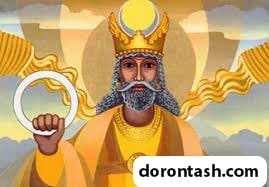
Shahrivargan festival is also known as Azar festival and is held on the fourth day of Shahrivar. Shahrivargan is also considered as the day of ancient Iranian fathers. This celebration is one of the 12 monthly masterpieces of Iranians and a part of Iranian water festivals.
Historically, Shahrivargan coincides with the birthday of Shah Darab (Dariush) and Hazrat Mani. The rituals of this celebration include lighting a fire, gathering together, and sharing food with the needy.
Shahrivargan celebration customs
One of the customs of Shahrivargan festival is to light the fire, gather together and share food with the needy. At the end of the celebration, people would take the fires to the roofs of the houses. Other rituals of this celebration include horse riding and decorating houses. The coincidence of this celebration with the birthday of Darab (who in some sources is considered the same as Cyrus the Great ) and also the anniversary of the death of Mani, who was a pure prophet, was only because of the value of these people’s character and character. In the ancient Iranian calendar, they did not name a day because it coincided with the birth and death of a person; Rather, only the character and greatness of humans was worth recording a day as a celebration.
Father’s Day was named in the ancient Iranian calendar at the same time as the Shahrivargan festival, due to the closeness of the meaning of this day to the position of the father in the family. As Esfandang was called women’s day because of the birth of the earth. Shahrivargan festival was also very important for farmers; Because September was the month of harvest and the farmers believed that in order to harvest more, they should celebrate. Among other celebrations of Shahrivar month on the eighth day of this month was the “Khazan” festival, which was held to welcome the autumn season.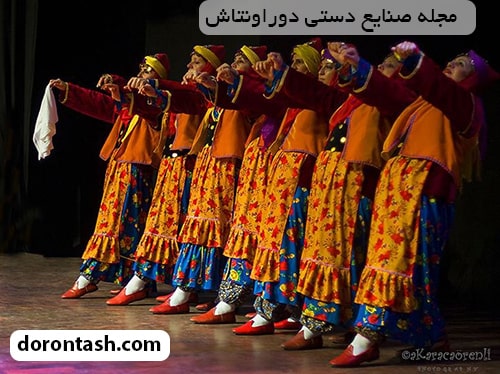
Festivals of ancient Iran Mehrgan festival
Mehrgan festival from ancient times until today is held on the 16th day of Mehr month. This festival is considered one of the most famous festivals of ancient Iran and according to the existing narratives, Mehrgan Day was the beginning of the new year for Iranians in the distant past. The ancient Iranians also considered this day as the day of Kaveh Ahangar’s uprising and his victory over Dhahak, and they celebrated with joy and stomping during the festival of Mehrgan.
In the last days of Cyrus’ reign, the first day of the year was changed to the beginning of April and was called Nowruz. According to historical sources, the name of this festival was named Mehrgan after the name of the goddess Mehr or Mitra. Mitra is one of the most valuable goddesses and the source of goodness, friendship and truth and the enemy of lies and impurity. Celebrating Mehrgan was accompanied by joy, stomping and giving gifts to each other. On this day, people would sweep the houses and streets, wear purple clothes, prepare various foods, read poetry and play music.
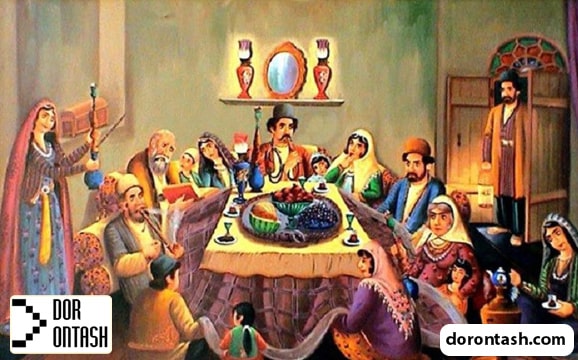 One of the other common customs in Mehrgan festival was to spread the Mehrgan table around the fire. On this table, from water and rose water to all kinds of sweets and syrups, nuts, dried fruits and colorful fruits were placed and the top of the table was decorated with mirrors, candlesticks, flowers and vases. The celebration of Mehrgan is still popular among Zoroastrians today, and every year on the sixteenth of Mehr month, they perform this ceremony in cities such as Yazd and the Chek Chek Ardakan shrine.
One of the other common customs in Mehrgan festival was to spread the Mehrgan table around the fire. On this table, from water and rose water to all kinds of sweets and syrups, nuts, dried fruits and colorful fruits were placed and the top of the table was decorated with mirrors, candlesticks, flowers and vases. The celebration of Mehrgan is still popular among Zoroastrians today, and every year on the sixteenth of Mehr month, they perform this ceremony in cities such as Yazd and the Chek Chek Ardakan shrine.
Festivals of ancient Iran Abangan festival
In ancient Iran, Abangan festival was celebrated on the tenth day of Aban. This festival is held to honor the goddess of water, Anahita. Anahita has had a valuable place in Iranian mythology. He is the symbol of purity on earth.
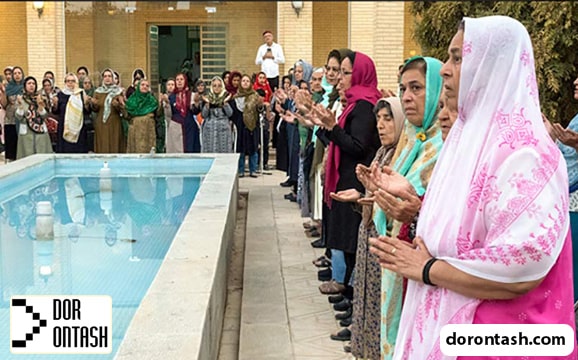 Iranians used to go near the spring to celebrate Abangan and read a part of the Avesta prayer called Abzur for the water to flow. This element, like other elements of fire, air and earth, is very important in ancient Iranian religion. Iranians praise these four elements, which are the basis of life, and today Zoroastrians consider them pure and attribute them to goddesses. In this festival, people dressed in white clothes went to the rivers and springs and took food and drinks with them. This celebration, like other ancient Iranian celebrations, started with the singing of prayers, prayers, Avesta and hymns, and continued with stomping.
Iranians used to go near the spring to celebrate Abangan and read a part of the Avesta prayer called Abzur for the water to flow. This element, like other elements of fire, air and earth, is very important in ancient Iranian religion. Iranians praise these four elements, which are the basis of life, and today Zoroastrians consider them pure and attribute them to goddesses. In this festival, people dressed in white clothes went to the rivers and springs and took food and drinks with them. This celebration, like other ancient Iranian celebrations, started with the singing of prayers, prayers, Avesta and hymns, and continued with stomping.
Festivals of ancient Iran Azargan festival
Azar is called Atresh in Avesta, which may have turned into fire over time. Also, Azar means fire in modern Persian. In Iranian culture, fire is a sacred element in the world, because it creates heat and light, which is the source of life.
In ancient ghats (Zoroastrian prayers), Azar is mentioned as the light of God. Azargan festival is held on the ninth day of Azar. One of the most important rituals that is performed on the day of Azargan festival is to go to the fireplaces and light the fire, which is common among Zoroastrians today.
Azargan festival customs
One of the most important things on the day of Azargan celebration is going to the fire pits and lighting the fire, which is still done by Zoroastrians today. In ancient times, Iranians celebrated this festival by lighting fire on the roofs of houses and celebrating and stomping. Reciting prayers and prayers by priests and spreading food tables were other customs of this celebration. “Fire Prayer” which is the fifth prayer of “Khorde Avesta” was also recited in this celebration. Azargan festival is still held by Zoroastrians in cities such as Kerman, Yazd, Shiraz and Tehran.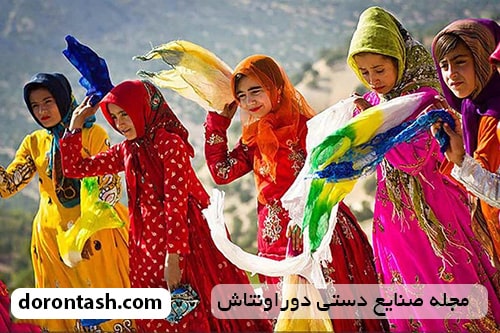
Festivals of ancient Iran, Digan festival (Khorram Rooz)
The first day of January is called Khorram Rooz. Due to the fact that Day is one of the attributes of the only god among Zoroastrians and they named the coldest month of the year after Ahura Mazda, this festival is considered one of the most important Iranian festivals.
Digan festival is held on the longest and darkest night of the year, that is, on the night of the winter solstice of the Northern Hemisphere. Khorram Rooz is the first day of the 10th month of the Iranian calendar. Both religious and non-religious traditions are associated with this day, such that the ancient Iranians considered it the first day of the New Year.
January was one of the most festive months for the Zoroastrians of ancient Iran. “Sir Sur” festival was held on the 14th of December to ward off demons, and it was customary to cook dishes with a lot of garlic on this day. “Batika” festival was also held on the 15th of December to drive away malicious and harmful people. In this celebration, they made statues of people and burned them. On the 16th day of January, the “Gaugil” festival was held, which was in the custody of Fereydon.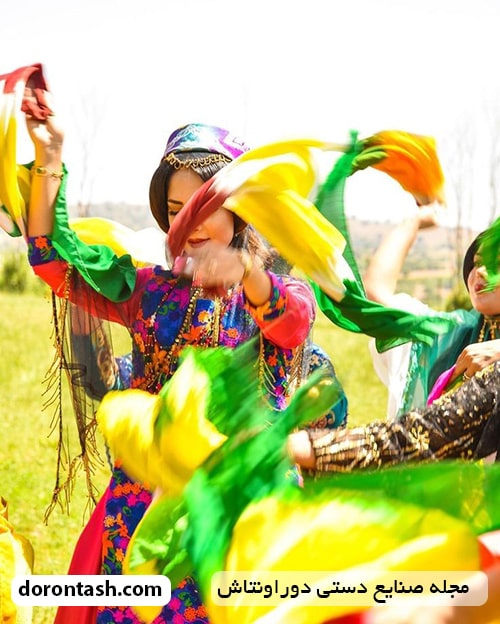
Festivals of ancient Iran, Bahmangan festival
In ancient Iran, each day of the month was named after one of their goddesses. Bahmangan festival is held on the second day of Bahman month. Bahmangan was held to thank and appreciate one of the founders of the Zoroastrian religion named Wohuman.
This Zoroastrian angel is a symbol of wisdom. At that time, whenever the day and the moon became one, they spent that day in celebration and joy. Bahmangan is one of the months that is celebrated because the day and month of Bahman are one. Zoroastrian people refrain from eating meat during the Bahman festival, even some of them forbade themselves to eat meat all days of Bahman.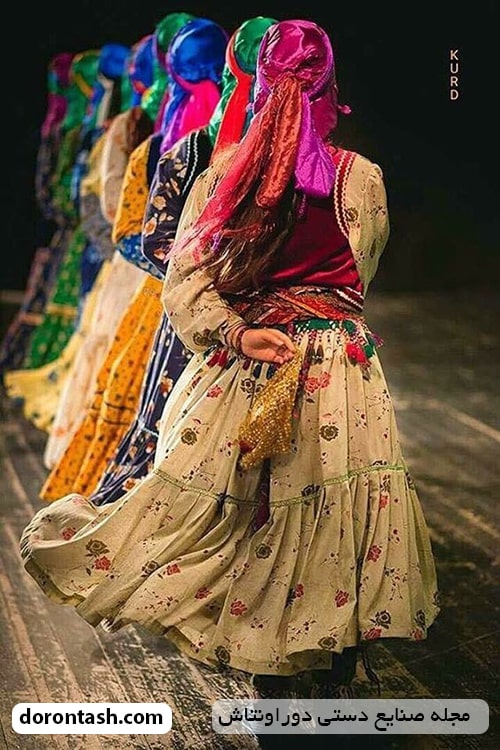
Bahmangan festival customs
One of the most important customs of Bahmangan festival was to avoid killing animals and eating their meat. Some Zoroastrians were still observing these rituals until the end of Bahman. In this festival, like other festivals in ancient Iran, it was common to wear white clothes, and roosters and jasmine flowers were considered the symbols of this festival. On the 22nd of Bahman, the Zoroastrians of ancient Iran celebrated the “Badireh” festival, which was in honor of the god of wind.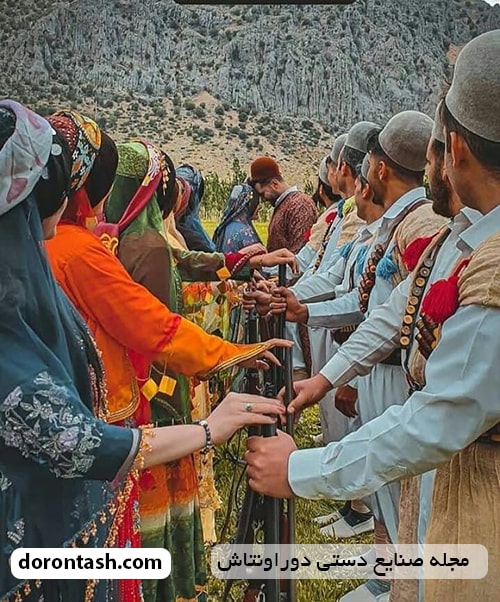
Festivals of ancient Iran Sepandar Mozhgan festival
Love has always been an important part of Iranian culture. Whether love is in the sweet verses of Persian poets or through the spiritual love of Sufis for God, it has spread in Iran for thousands of years. But did you know that long before the creation of Valentine’s Day, there was a day in Iran to celebrate love and express respect for women? This day is called “Spandarmezgan” or recently “Esfandang”. According to the ancient calendar, March 5 was celebrated as the day of love.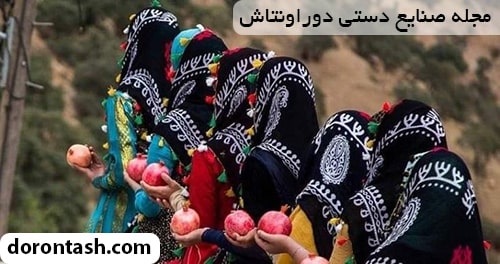
The most important festivals of ancient Iran
Among the celebrations of ancient Iran, Nowruz and Yalda have a special place, which are still celebrated in many magnificent Iranian families. In this section, we introduce these celebrations.
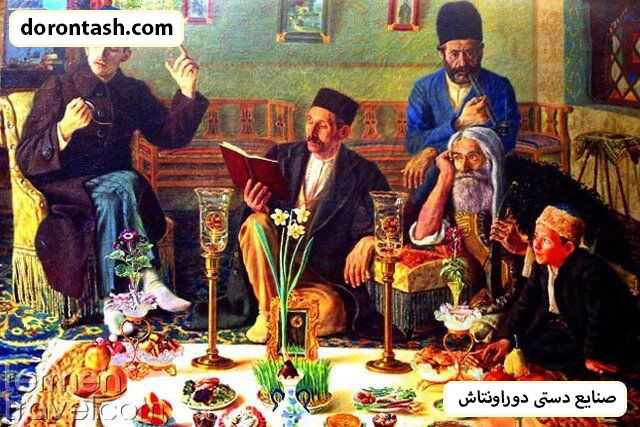 Norouz ceremony
Norouz ceremony
Nowruz celebration has been considered one of the most important celebrations of Iran since ancient Iran. This celebration is held at the beginning of April and it is the beginning of the new solar year. In the past, Nowruz was divided into two parts: Small Nowruz and Big Nowruz, and the first day of April was called Small Nowruz. The first five days of April were also the time of New Year’s celebrations and were held in public.
In this celebration, it is very customary to present Nowruz gifts to your loved ones and celebrate the beginning of the new year with the family members by sitting on the table in front of the Haft Sin mirror .
In ancient times, Iranians considered Nowruz as the time to determine the fate of the coming year and believed that the souls of their dead would return home on this day. The sixth day of April was the day of Nowruz, and it was called Khordad Rooz in the ancient Zoroastrian calendar. Zoroastrians considered and honored this day as the birth of their prophet. Among the ancient Iranians, Khordad Roz was associated with Anahita, the goddess of water.
Yalda night celebration
Yalda is the longest night of the year and is known for the victory of light over darkness and good over evil. When you trade sweet dreams for reading about Iranian heroes in the epic poem Shahnameh and receiving heavenly guidance from Hafez’s lyricist, you’ll be introduced to a great deal of Iranian culture. On this night, it is customary to use mixed nuts and red fruits such as watermelon and pomegranate, which symbolize the red dawn.
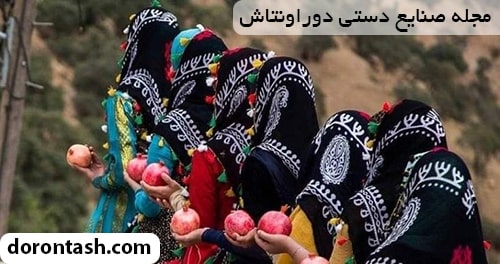 The celebration of Yalda night is one of the other ancient celebrations of Iran, which has preserved its history over the years and is still held magnificently today. Yalda night, which is the last night of autumn and the night of the first day of winter, is considered the longest night of the year and starts from the sunset of the last day of Azar and continues until the dawn of the first day of January. In ancient times, Yalda night was known as the night of the birth of Izad Mehr. Iranians believed that on this night, Mitra will win over the devil, and after that, blackness and darkness will go towards destruction, and because of this, the days will be longer and the nights will be shorter.
The celebration of Yalda night is one of the other ancient celebrations of Iran, which has preserved its history over the years and is still held magnificently today. Yalda night, which is the last night of autumn and the night of the first day of winter, is considered the longest night of the year and starts from the sunset of the last day of Azar and continues until the dawn of the first day of January. In ancient times, Yalda night was known as the night of the birth of Izad Mehr. Iranians believed that on this night, Mitra will win over the devil, and after that, blackness and darkness will go towards destruction, and because of this, the days will be longer and the nights will be shorter.
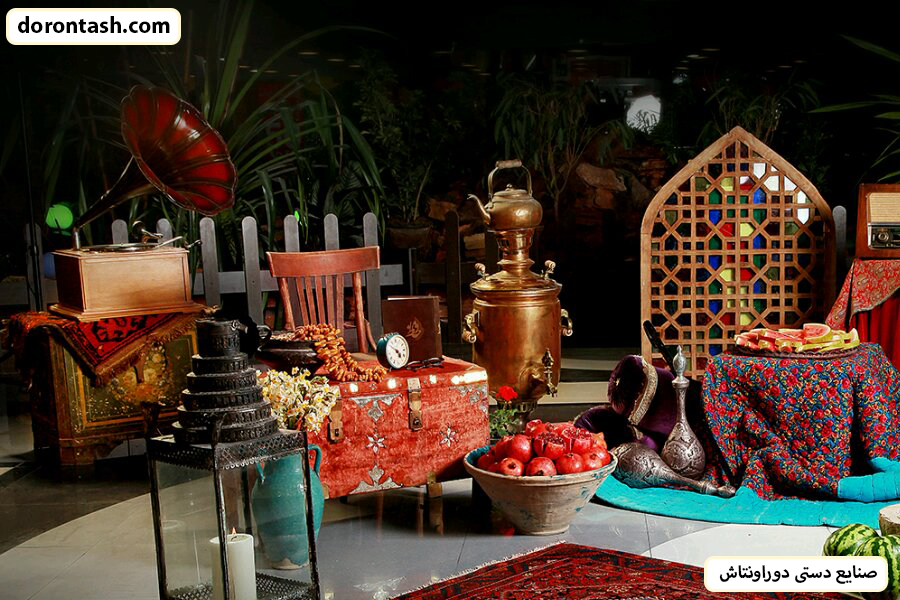 Yalda celebration is still celebrated in different parts of the world today, and the customs related to it are also common and considered as one of the traditions of ancient Iran. On this night, families gather together and usually visit the elders of the family. The Yalda night table is considered one of the most fruitful traditional Iranian tables, in which there are nuts and dried fruits to all kinds of colorful fruits and traditional sweets, but in the past, only seven types of nuts and seven fruits were put on the Yalda night table.
Yalda celebration is still celebrated in different parts of the world today, and the customs related to it are also common and considered as one of the traditions of ancient Iran. On this night, families gather together and usually visit the elders of the family. The Yalda night table is considered one of the most fruitful traditional Iranian tables, in which there are nuts and dried fruits to all kinds of colorful fruits and traditional sweets, but in the past, only seven types of nuts and seven fruits were put on the Yalda night table.
Fire festivals in ancient Iran
As you read, various ceremonies are held in Iran, some of which are called fire festivals. In ancient Iran, fire was considered the most important natural element in the world among the four elements of water, wind, earth and fire. The place of worship of Ahura Mazda for Zoroastrians was fire temples, and this shows the importance of fire for Zoroastrians. Accordingly, the ancient Iranians held many traditional celebrations based on the worship of fire. Among these festivals, Ardibeheshtegan, Shahrivargan and Azargan, which were monthly festivals in ancient Iran, are also included, which we introduced in the previous parts. In this part, we introduce some famous fire festivals in ancient Iran.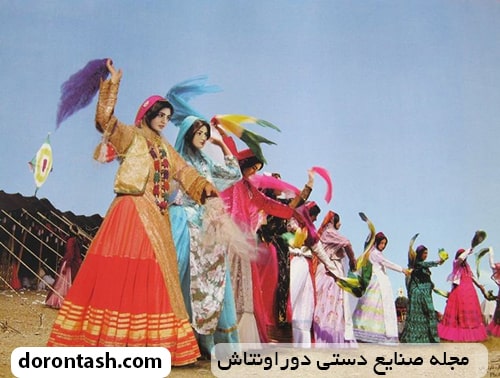
Sadeh
Sade festival is one of the most important festivals of Zoroastrians in the world, which is held on the 10th of Bahman month, or Roz Aban of Bahman month. In this celebration, Zoroastrians praise Ahuramazda and stomp their feet, and some people also play musical instruments. In this ancient festival, it is also popular to read Shahnameh and Naqali. In the past, the Sedeh celebration, along with the Yalda and Nowruz celebrations, was one of the most important ceremonies in ancient Iran; Although today this ceremony is not held with the old extent, but for Zoroastrians all over the world, this celebration has kept its importance.
 The century festival is also known as the fire festival or the winter festival. The most important sign of the Sedeh celebration is the fire, and Zoroastrians set up the fire as a sign of the power and greatness of Ahura Mazda, and they all participate in gathering firewood to light the fire. Fire plays a significant role in all Zoroastrian celebrations and ceremonies, and the followers of this religion have great respect for it. One of the other characteristics of the celebration of the century is the gathering of Zoroastrians together and the closeness of people to each other. In the past, fires were lit on the roofs of the houses and in the high places of the city and the village, and this celebration was celebrated with joy and ritual dances.
The century festival is also known as the fire festival or the winter festival. The most important sign of the Sedeh celebration is the fire, and Zoroastrians set up the fire as a sign of the power and greatness of Ahura Mazda, and they all participate in gathering firewood to light the fire. Fire plays a significant role in all Zoroastrian celebrations and ceremonies, and the followers of this religion have great respect for it. One of the other characteristics of the celebration of the century is the gathering of Zoroastrians together and the closeness of people to each other. In the past, fires were lit on the roofs of the houses and in the high places of the city and the village, and this celebration was celebrated with joy and ritual dances.
There are various narratives about the history of the century celebration. A tradition mentions the connection of the century celebration with the number 100 and considers the 10th day of Bahman as the 100th day after the beginning of the cold season from the beginning of Aban. On the other hand, there are 50 days and 50 nights left from 10th of Bahman to 1st of Spring, which add up to 100.
In ancient times, Iranians considered the two months of January and Bahman to be the powerful time of Ahriman, and in order to safely pass these two months, they prayed and prayed, and because they considered the 10th day of Bahman as the day of the discovery of fire, they held the Sedah festival in order to overcome the devil with fire. they did. There are other narrations about the number of the first children of Adam reaching one hundred on this day.
According to another narration, it took 100 days from the date of the Sedeh festival to the time of grain harvest, and that is why they celebrated the Sedeh festival on this date. In the remaining works of Abu Rihan Biruni, the connection between the century celebration and the number 100 is mentioned. But some historians believe that there is no connection between the naming of the century celebration with this name and the number 100. According to this group of historians, sedeh in Avestan language means the rising of the sun and sunrise, and because in the past, the winter season was divided into two parts, the big cale and the small cale, they consider the tenth day of Bahman to be the end of the big cale; When the earth will warm up and give birth. Therefore, the ancient Iranians celebrated the end of the great calamity on this day by holding the Sedeh ceremony and promising the warming of the earth and the approach of spring by building a fire.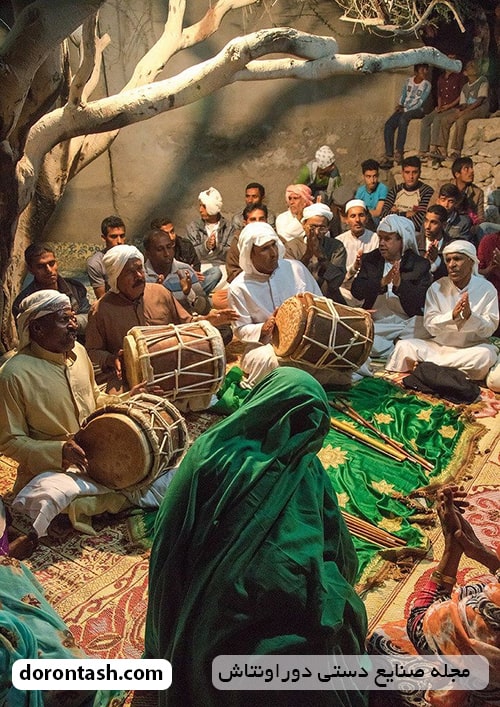
According to another theory, since ancient times until today, the number 40 has been sacred for Iranians and the Yalda festival is considered one of the most important festivals and ceremonies of Iranians. Therefore, the symmetry of the celebration of Sedeh with forty days after the Yalda night attracts the attention of some historians. Therefore, this group of history scholars consider the philosophy of celebrating the 40 days of the Sun (Izd Mehr) as the celebration of the century; Because the sun is born from Yalda.
Syrian Wednesday celebration
Iranians all over the country celebrate Chaharbansuri, which is also called Chaharbansh-e-Sorh, on the eve of the last Wednesday before Nowruz. During the celebration of Chaharban Suri, the night sky lights up with fireworks and fireworks light up the streets.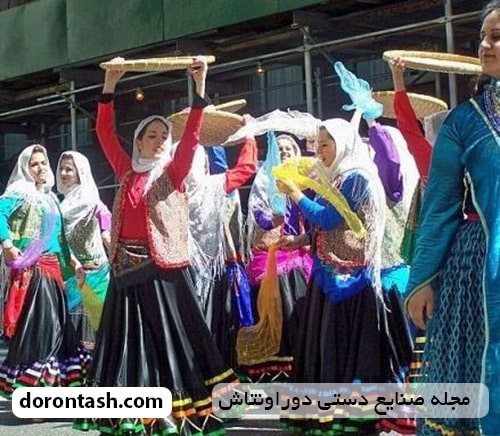
Also, a large crowd of people are enjoying themselves and singing Your Red Color for Me, My Yellow Color for You. These lyrics refer to you giving your yellow color to the fire and receiving its warm energy.
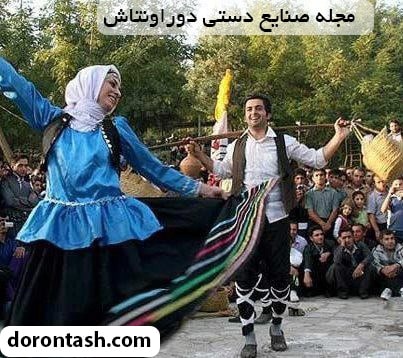 party with us
party with us
Nusra festival is held 5 days before Sedeh festival. In fact, this celebration is a prelude to a more magnificent celebration. This ancient festival is still held in some Iranian cities such as Shiraz, Yazd and Kerman. Nusra festival is held to give thanks to God, who is the source of light and life.
One of the customs of this celebration is to build a fire and recite prayers and supplications at Dargah Haq. In the narrations, it is said that by holding this ceremony, religious and religious elders help to make the celebration of the century as magnificent as possible. Nusra festival is one of the fire festivals in ancient Iran.